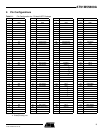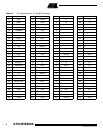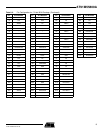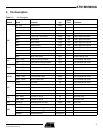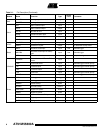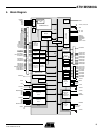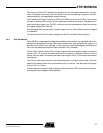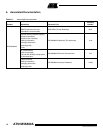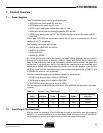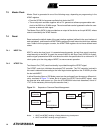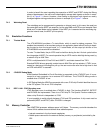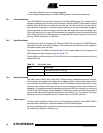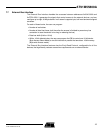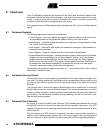
11
1745D–ATARM–04-Nov-05
AT91M55800A
The Real-time Clock (RTC) peripheral is designed for very low power consumption, and com-
bines a complete time-of-day clock with alarm and a two-hundred year Gregorian calendar,
complemented by a programmable periodic interrupt.
The Parallel Input/Output Controllers (PIOA and PIOB) control the 58 I/O lines. They enable
the user to select specific pins for on-chip peripheral input/output functions, and general-pur-
pose input/output signal pins. The PIO controllers can be programmed to detect an interrupt
on a signal change from each line.
The Watchdog (WD) can be used to prevent system lock-up if the software becomes trapped
in a deadlock.
The Special Function (SF) module integrates the Chip ID and Reset Status registers.
5.2.2 User Peripherals
Three USARTs, independently configurable, enable communication at a high baud rate in syn-
chronous or asynchronous mode. The format includes start, stop and parity bits and up to 8
data bits. Each USART also features a Timeout and a Time Guard Register, facilitating the
use of the two dedicated Peripheral Data Controller (PDC) channels.
The six 16-bit Timer/Counters (TC) are highly programmable and support capture or waveform
modes. Each TC channel can be programmed to measure or generate different kinds of
waves, and can detect and control two input/output signals. Each TC also has three external
clock signals.
The SPI provides communication with external devices in master or slave mode. It has four
external chip selects which can be connected to up to 15 devices. The data length is program-
mable, from 8- to 16-bits.
The two identical 4-channel 10-bit analog-to-digital converters (ADC) are based on a Succes-
sive Approximation Register (SAR) approach.



